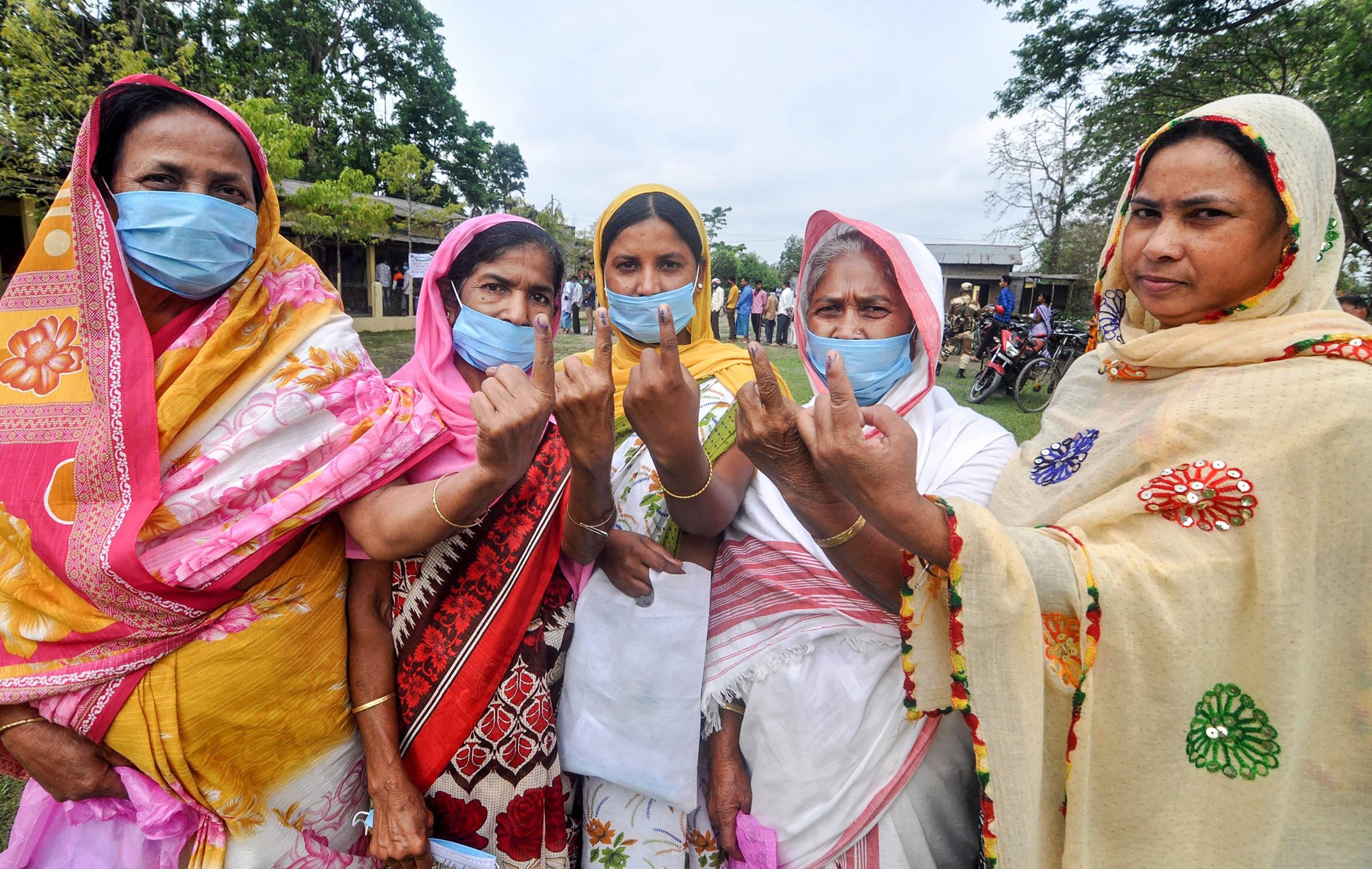Voting started at 7am on Thursday in West Bengal and Assam in phase 2 of the eight-phase elections for assemblies of five states. A total of 69 seats — 30 in West Bengal and 39 in Assam — are voting to decide the fate of 516 candidates. But, all eyes are on Nandigram, the biggest contest of this election, where West Bengal CM Chief Minister Mamata Banerjee is pitted against former aide Suvendu Adhikari, who is in BJP now.

In the second phase, Assam recorded voters turnout of 80.83%, while West Bengal recorded 86.11%.
Five states — West Bengal, Assam, Tamil Nadu, Kerala, Tamil Nadu, and Puducherry — are voting over a month in eight phases to elect new assemblies. Votes will be counted on May 2.
West Bengal

The primary contest here is between the Trinamool Congress, the ruling party of 10 years, and the Bharatiya Janata Party (BJP), which is seeking to wrest power. The BJP, enthused by its performance in the 2019 Lok Sabha elections (when it won 18 seats against 2 of 2014), pulled all stops. From fielding sitting MPs to lining up senior leaders for the campaign, the saffron party unleashed an aggressive campaign in the state.
Also Read | Is Mamata Banerjee sensing defeat in Nandigram? BJP says so amid audio row
Chief Minister Mamata Banerjee, fighting anti-incumbency and steady exodus from the party, put up a brave fight, which included taking the battle to the enemy camp. She decided to contest from Adhikari’s den – Nandigram – letting go of her traditional seat Bhabanipur.

Out of the 171 candidates contesting in the second phase, 43 have declared criminal cases against them. Of these 43, 17 are from BJP, eight from the Trinamool Congress, seven from the Communist Party of India (Marxist), three from the Socialist Unity Centre of India (Communist), two each from the Congress and Bahujan Samaj Party, and one from Communist Party of India.
Six of the constituency going to vote are Red alert constituencies. Among the 171 candidates, only 11% are female, i.e 152 are men and 19 are women.
Also Read | Why Nandigram is critical for Mamata Banerjee and significant for BJP
In the first phase, West Bengal saw an 82% voter turnout. Assembly elections for the rest of the seven phases in West Bengal will be held from April 6 to April 29. Votes will be counted on May 2.
Assam

Assam witnessed peaceful first phase polling on March 27. Around 77% of the total 81.09 lakh voters exercised their franchise in 47 constituencies as they adhered to COVID-19 protocols. In the second phase of the polling, a total of 345 contestants are in the fray for 39 constituencies. This will include four ministers and the deputy speaker. According to the Chief Electoral Officer, in total 649 nominations were filed, out of which 30 were rejected and 33 were withdrawn.
Among the prominent candidates in the fray are BJP’s Parimal Suklabaidya (Dholai), Bhabesh Kalita (Rangia), Pijush Hazarika (Jagiroad) and Deputy Speaker Aminul Haque Laskar (Sonai).
Former Deputy Speaker Dilip Kumar Paul, who resigned from the BJP after he was denied a ticket, is contesting as an Independent from Silchar.

In the second phase, 37 out of 345 have criminal records, meaning 11% of the contestants in the fray have criminal records.
Of these, 11 are from the BJP, five each from the Congress and All India United Democratic Front (AIUDF), three from Assam Jatiya Parishad (AJP), two from Asom Gana Parishad (AGP) and one each from All India Forward Bloc, Socialist Unity Centre of India (Communist), and United Peoples Party Liberal (UPPL).
Out of the 37 constituencies, 30 going to vote are Red alert constituencies – where three or more contesting candidates have criminal cases against them. Only 8% of the 345 candidates are female.







